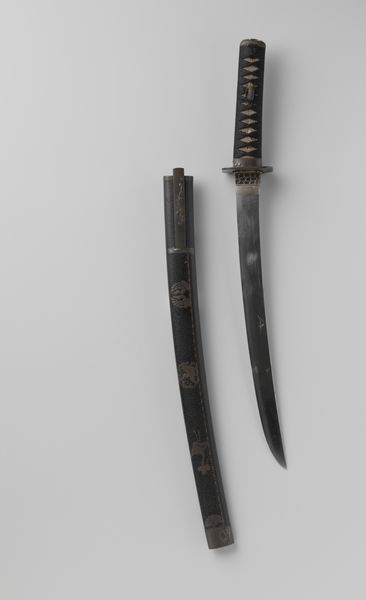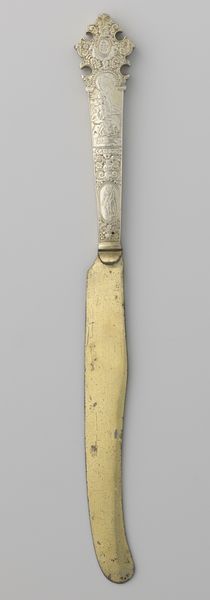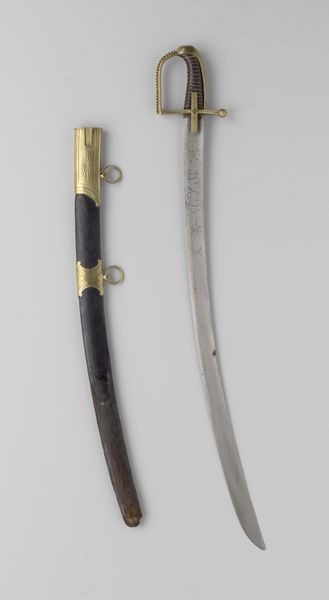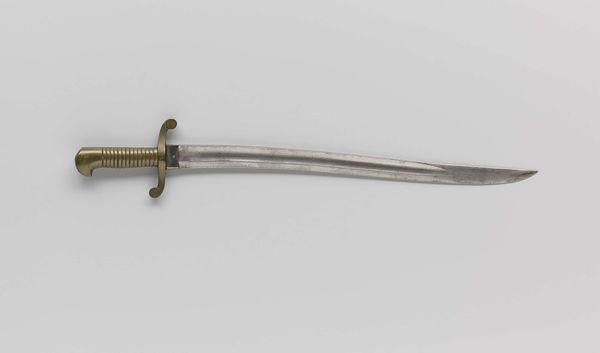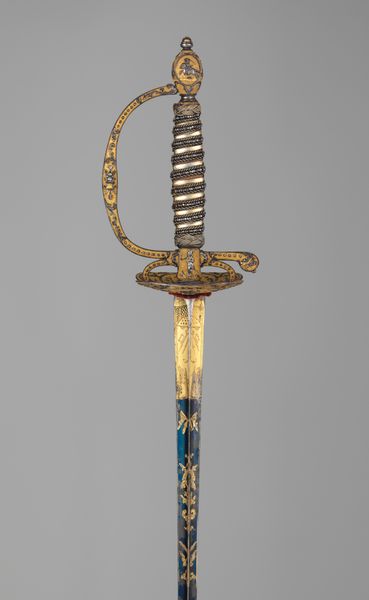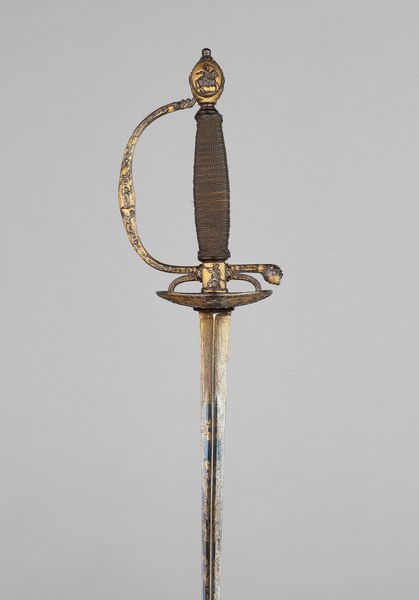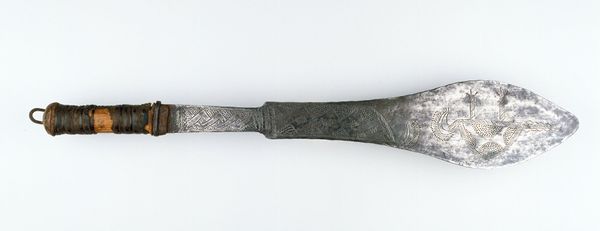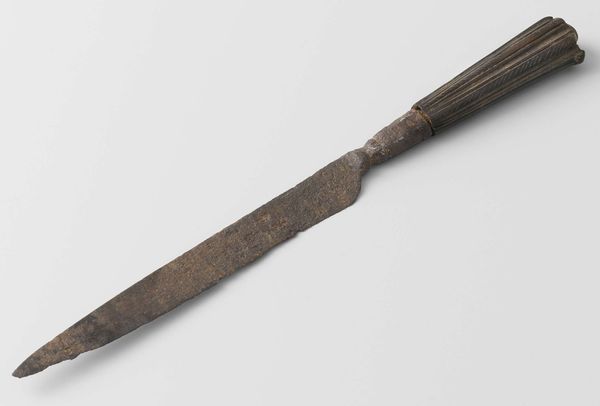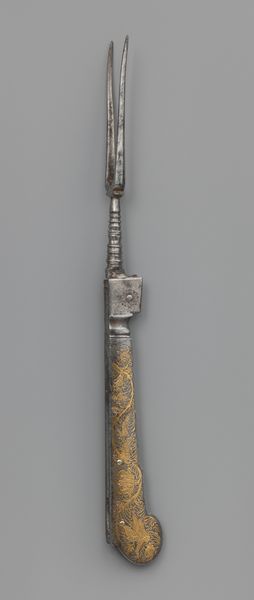
Short Sword (Yatagan) from the Court of Süleyman the Magnificent (reigned 1520–66) 1500 - 1555
0:00
0:00
metal, gold
#
still-life-photography
#
metal
#
gold
#
islamic-art
#
armor
#
product photography
#
sword
Dimensions: L. 23 3/8 in. (59.3 cm); L. of blade 18 3/8 in. (46.7 cm); Wt. 1 lb. 8 oz. (691 g)
Copyright: Public Domain
Editor: This striking short sword, or Yatagan, was made between 1520 and 1566, likely by Ahmed Tekelu for Süleyman the Magnificent. The blade's a burnished metal, but the hilt blazes with gold. What strikes me most is the contrast; the lethal grey edge against the intricate, opulent handle. How do you read this piece? Curator: Intriguing, isn’t it? Notice how the artist draws your eye upward. The sinuous curve of the blade provides the primary structure, then, our gaze is drawn from the matte steel upwards to the burnished gold filigree of the hilt. Consider the symbolic weight; gold, here, serving to monumentalize an object intended for death. Editor: So you’re saying the artist used contrast to highlight the paradoxical relationship between beauty and violence? Curator: Precisely. The formal elements orchestrate the entire piece. The gilded dragons, intertwined and meticulously crafted, serve a dual function; ornamentation and symbolism are, structurally, fused. Observe the tension between the cold, flat plane of the blade and the complex, three-dimensional patterns that crown it. What does that opposition suggest to you? Editor: It’s like… a blurring of the line between art and utility? The practical purpose of the sword almost fades behind the artistry. Curator: Yes! And consider how the sword’s curve plays with positive and negative space against its backdrop. The artist understood not just the craft of weaponry, but the choreography of visual impact. Editor: I never thought about it that way. I was so focused on the historical aspect, but now I see how the lines, shapes, and materials work together to create a complex visual experience. Curator: And that interplay, that visual dialogue, is ultimately what elevates it beyond a mere object of war into a captivating work of art.
Comments
No comments
Be the first to comment and join the conversation on the ultimate creative platform.
